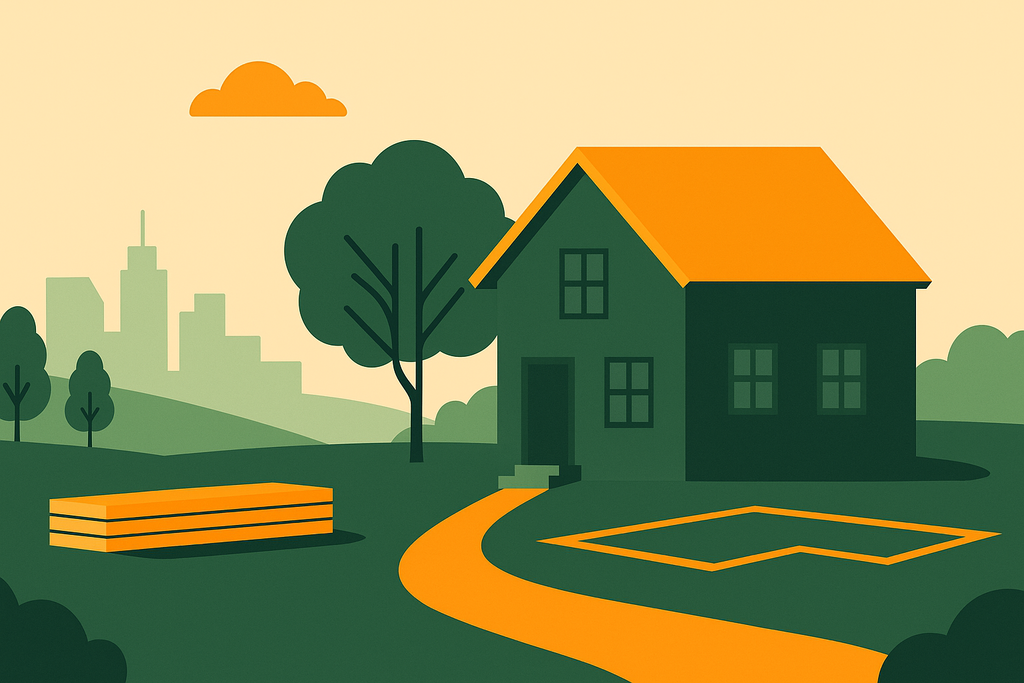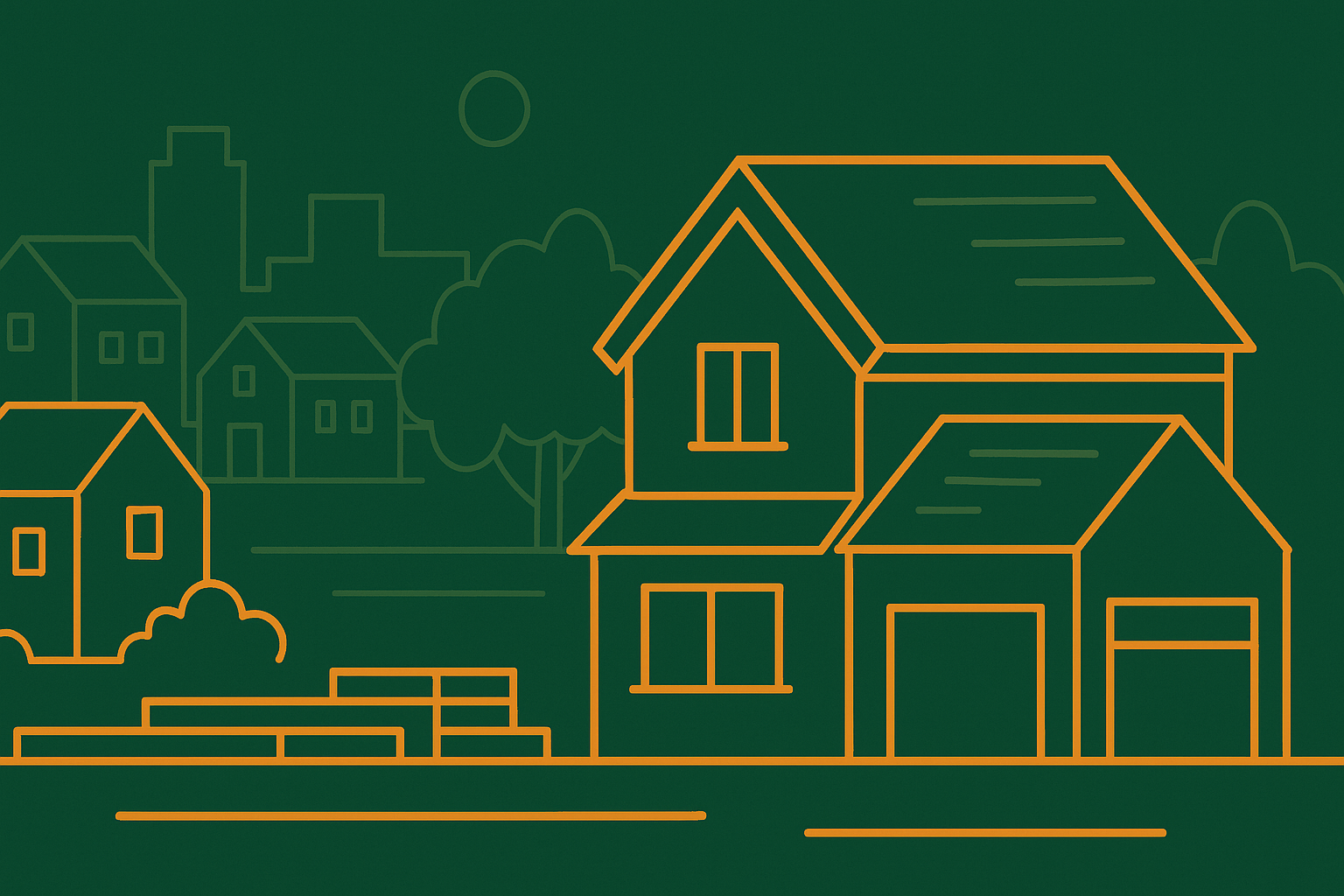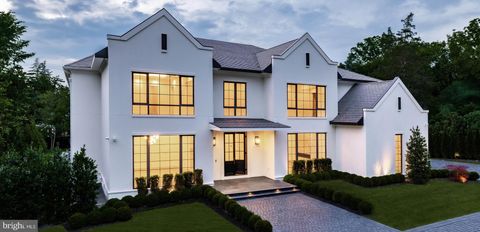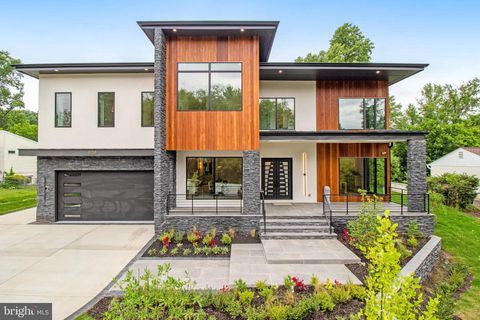What Builders Don’t Tell You (and How to Budget for It)
You walk into a model home and instantly feel like you’ve stepped into a dream. The lighting is perfect. The kitchen looks like something out of a magazine. Every room feels fresh, open, and perfectly staged.
Then you see the price tag and think, “Okay, that’s actually not bad.”
But here’s the truth: the number on the brochure — the one that says “starting at” — doesn’t tell the whole story. In this post, we’re breaking down the hidden costs of buying new construction so you can plan with confidence and avoid expensive surprises.
🏡 Ready to plan your new construction purchase the smart way?Schedule your Perfect Home Consultation today and get a personalized plan that fits your goals and budget.
The Base Price Myth
When a builder lists a home as “starting at $700,000,” that number is the base price — the cost of the home before upgrades, options, or lot selections are added. It’s essentially the bare minimum version of the home: four walls, a roof, and basic finishes.
Model homes, the ones that make you fall in love, are not base models. They’re like the fully loaded luxury car on the showroom floor.
That gorgeous kitchen backsplash, quartz countertops, and upgraded flooring? All upgrades. Builders design model homes to show what’s possible, not what’s included.
In Northern Virginia, model homes often feature $80,000 to $150,000 (or more) in upgrades. So while the builder might advertise “starting at $700,000,” the version you fall for can easily cost closer to $800,000 or higher.
Pro Tip: Don’t anchor your expectations to the base price. Anchor them to what you actually want in your finished home.
Lot Premiums: Paying More for Location
Here’s a cost that surprises almost everyone: lot premiums.
When you choose a lot, not all are priced the same. Builders charge premiums for “better” locations within the community — like lots that back to trees, sit on cul-de-sacs, or get better sunlight.
For a deeper look at where and how new construction pricing varies locally, check out our Fairfax County New Construction Ultimate Guide. It covers the top communities, builder options, and what to expect when comparing neighborhoods in Northern Virginia.
In Northern Virginia, lot premiums typically range from $10,000 to $100,000 or more, depending on the community and location.
These premiums often aren’t included in the advertised base price. Buyers walk in thinking they’re getting the $700,000 home, only to find all available lots come with premiums, instantly pushing the price to $740,000 or higher.
It’s not a scam. It’s just part of how new construction pricing works. But if you don’t ask upfront, it can catch you off guard.
Pro Tip: Ask early, “What are the lot premiums for available sites?” It’s a small question that can save you a big surprise later.
The Design Center Effect
Here’s where budgets often go off the rails: the design center.
This is the fun part, choosing finishes, colors, and all the details that make your home feel personal. It’s also where buyers quickly go from “we’re doing great” to “how did we get here?”
Builders include builder-grade finishes in the base price — materials that are serviceable but plain. If you want your home to look like the model, you’ll likely upgrade almost everything.
- Countertops: +$8,000
- Flooring throughout main level: +$15,000
- Cabinet upgrades: +$20,000
- Lighting, fixtures, and backsplash: +$10,000–$15,000
Most buyers spend 10% to 20% of the home’s base price in upgrades. For a $700,000 home, that’s another $70,000 to $140,000 — just at the design center.
And here’s something that surprises many buyers: items you assume come standard often don’t. Ceiling fans, blinds, even wiring for pendant lights are usually extra.
Pro Tip: Focus on upgrades that are hard to change later, such as flooring, cabinetry, kitchen layout, or adding a bathroom. You can always swap light fixtures or repaint later at your own pace and for less.
How to Budget Smartly
So how do you prepare for these costs without blowing up your budget?
- Add a Cushion: Plan for 10% to 15% more than your target budget. If you’re comfortable with $800,000, be prepared for up to $920,000 after upgrades and premiums.
- Ask for an “Included Features” List: Every builder has one. This outlines what’s included in the base price and what’s extra. Review it carefully before signing.
- Visit the Design Center Early: If possible, go before you sign a contract. This helps you understand what’s realistic for your budget and prevents emotional overspending later.
- Work with a New Construction Agent: Builder reps work for the builder — not for you. Having an agent who knows how to spot red flags and ask the right questions can protect your interests and your wallet.

Final Thoughts
New construction homes are incredible; everything is new, customized to your taste, and move-in ready. But it’s easy to underestimate the real cost of getting there.
Builders aren’t being deceptive; they’re showing the ideal version of your future home. It’s up to you to go in prepared, ask the right questions, and budget for the full picture.
When you understand how base prices, lot premiums, and design upgrades work, you’ll make smarter choices and end up with a home that fits both your lifestyle and your financial comfort zone.
If you’re thinking about buying new construction and want help building a realistic plan for your budget, schedule your Perfect Home Consultation with us today. We’ll walk you through the process, compare builder options, and help you find a home that truly fits your goals in Northern Virginia.
Want to see what these upgrades actually look like? Check out our new construction home tours on YouTube. You’ll see firsthand how these hidden costs appear in real homes and how to plan for them.





















